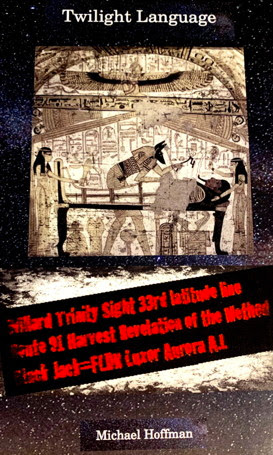Feb. 8, 2015
http://www.nytimes.com/2015/02/09/opinion/dont-arm-ukraine.html
The Ukraine crisis is almost a year old and Russia is winning. The separatists in eastern Ukraine are gaining ground and Russia’s president, Vladimir V. Putin, shows no signs of backing down in the face of Western economic sanctions.
Unsurprisingly, a growing chorus of voices in the United States is calling for arming Ukraine. A recent report from three leading American think tanks endorses sending Kiev advanced weaponry, and the White House’s nominee for secretary of defense, Ashton B. Carter, said last week to the Senate armed services committee, “I very much incline in that direction.”
They are wrong. Going down that road would be a huge mistake for the United States, NATO and Ukraine itself. Sending weapons to Ukraine will not rescue its army and will instead lead to an escalation in the fighting. Such a step is especially dangerous because Russia has thousands of nuclear weapons and is seeking to defend a vital strategic interest.
There is no question that Ukraine’s military is badly outgunned by the separatists, who have Russian troops and weapons on their side. Because the balance of power decisively favors Moscow, Washington would have to send large amounts of equipment for Ukraine’s army to have a fighting chance.
But the conflict will not end there. Russia would counter-escalate, taking away any temporary benefit Kiev might get from American arms. The authors of the think tank study concede this, noting that “even with enormous support from the West, the Ukrainian Army will not be able to defeat a determined attack by the Russian military.” In short, the United States cannot win an arms race with Russia over Ukraine and thereby ensure Russia’s defeat on the battlefield.
Proponents of arming Ukraine have a second line of argument. The key to success, they maintain, is not to defeat Russia militarily, but to raise the costs of fighting to the point where Mr. Putin will cave. The pain will supposedly compel Moscow to withdraw its troops from Ukraine and allow it to join the European Union and NATO and become an ally of the West.
This coercive strategy is also unlikely to work, no matter how much punishment the West inflicts. What advocates of arming Ukraine fail to understand is that Russian leaders believe their country’s core strategic interests are at stake in Ukraine; they are unlikely to give ground, even if it means absorbing huge costs.
Great powers react harshly when distant rivals project military power into their neighborhood, much less attempt to make a country on their border an ally. This is why the United States has the Monroe Doctrine, and today no American leader would ever tolerate Canada or Mexico joining a military alliance headed by another great power.
Russia is no exception in this regard. Thus Mr. Putin has not budged in the face of sanctions and is unlikely to make meaningful concessions if the costs of the fighting in Ukraine increase.
Upping the ante in Ukraine also risks unwanted escalation. Not only would the fighting in eastern Ukraine be sure to intensify, but it could also spread to other areas. The consequences for Ukraine, which already faces profound economic and social problems, would be disastrous.
The possibility that Mr. Putin might end up making nuclear threats may seem remote, but if the goal of arming Ukraine is to drive up the costs of Russian interference and eventually put Moscow in an acute situation, it cannot be ruled out. If Western pressure succeeded and Mr. Putin felt desperate, he would have a powerful incentive to try to rescue the situation by rattling the nuclear saber.
Our understanding of the mechanisms of escalation in crises and war is limited at best, although we know the risks are considerable. Pushing a nuclear-armed Russia into a corner would be playing with fire.
Advocates of arming Ukraine recognize the escalation problem, which is why they stress giving Kiev “defensive,” not “offensive,” weapons. Unfortunately, there is no useful distinction between these categories: All weapons can be used for attacking and defending. The West can be sure, though, that Moscow will not see those American weapons as “defensive,” given that Washington is determined to reverse the status quo in eastern Ukraine.
The only way to solve the Ukraine crisis is diplomatically, not militarily. Germany’s chancellor, Angela Merkel, seems to recognize that fact, as she has said Germany will not ship arms to Kiev. Her problem, however, is that she does not know how to bring the crisis to an end.
She and other European leaders still labor under the delusion that Ukraine can be pulled out of Russia’s orbit and incorporated into the West, and that Russian leaders must accept that outcome. They will not. To save Ukraine and eventually restore a working relationship with Moscow, the West should seek to make Ukraine a neutral buffer state between Russia and NATO. It should look like Austria during the Cold War. Toward that end, the West should explicitly take European Union and NATO expansion off the table, and emphasize that its goal is a nonaligned Ukraine that does not threaten Russia. The United States and its allies should also work with Mr. Putin to rescue Ukraine’s economy, a goal that is clearly in everyone’s interest.
It is essential that Russia help end the fighting in eastern Ukraine and that Kiev regain control over that region. Still, the provinces of Donetsk and Luhansk should be given substantial autonomy, and protection for Russian language rights should be a top priority. Crimea, a casualty of the West’s attempt to march NATO and the European Union up to Russia’s doorstep, is surely lost for good. It is time to end that imprudent policy before more damage is done — to Ukraine and to relations between Russia and the West.
ADVERTISEMENT:
Back in print for the first time in 5 years. Now in a more affordable, paperback edition!
Judaism Discovered
A Study of the Anti-Biblical Religion of Racism, Self-Worship, Superstition and Deceit
Deconstructing the rabbinic texts line by line, Michael Hoffman has discovered a terra incognita: Orthodox Judaism as the ideological survival of the most ossified traditions of Babylonian paganism, concealed beneath a complex system of dissimulation and misdirection. His unsparing thesis is a radical challenge to Judaism’s claims to Biblical provenance and probity.
Partial list of subjects: Principal Sources of the Divine Law of Judaism; Deceit Mechanisms and Defense Mechanisms; No “Judeo-Christian” Tradition; Judaism’s Hermeneutic of Concealment; Power Over the Court System; the Tarnish on Hillel’s Golden Rule; Permissible Lying and Deceit; From Kabbalah to Aggadah: A Sexual Progression; Hasidic Paganism; Gentiles are not to be trusted; Talmud and Women; Jesus in the Talmud; Child Molestation; Halachos of Manslaughter; Maimonides: Rabbinic Worker of Iniquity; Maimonides and Islam; the Noahide Hoax; Anti-Black Racism; ‘Sin Chicken’; Cursing the homes and graves of gentiles and Christians; Images and Talismans; Circumcision; Abortion; Ritual Murder; the Talmud and Kabbalah in Protestantism and Catholicism; Judaism’s Homo-Erotic Culture; the “Menstrual Science” of the Rabbis; Judaism and Kabbalah: An Inseparable Unity; Purim; the Golem; Converts and Conversions; the Kosher Food Racket; the Kol Nidrei Nullification of Vows; Critics, Criticism and Apologetics; and more. This textbook-like volume offers a graduate course in the advanced study of Judaism!
“Judaism is not a normal adversary, it is an exceptional recrudescence of the guile and cunning synthesized from the accumulated intelligence of the eternal pagan psychodrama on which it is based....One of the most refractory intellectual and practical difficulties that scholars of integrity face is deciding how to apply to Judaism the same critical scrutiny to which Christianity and Islam are subjected, without being defamed as a ‘hater.” —Michael Hoffman
“Hoffman brings to this difficult task...a commitment to long years of personal study and research that will commend this work to all serious readers...I have found his scholarship to be a highly accurate reflection of both the spirit and the content of Talmudic writings...” —Robert Countess, PhD. Emeritus Professor of New Testament, Tennessee State University
“Judaism Discovered is a mine of information about Talmudic Judaism. I am astonished by the quality and the abundance of your documentation. Your many quotations from the Talmud and rabbis constitute indisputable argumentation concerning the anti-Christian enterprise of Judaism, and also the compromises of the governments and the Catholic Church with Judaism...I wish success for your book...” —Bishop Bernard Tissier de Mallerais, Econe, Switzerland
Massive (7 x 10) Softcover. 1102 pages. 1 map. 164 illustrations. 1194 notes. Indexed for easy reference.
Send me ____ copies of Judaism Discovered @ $49.95 each plus shipping. U.S. residents: be sure to add shipping: $3.50 for the first book and $1.00 shipping for each additional copy. Idaho residents: add 6% tax. Shipped by US Postal Media Mail. Please allow up to four weeks for delivery.
To: Canada US$99 postpaid. Overseas: US$125 postpaid. Pay in US funds from a US bank.
Mail to: Independent History and Research • Box 849 • Coeur d’Alene • Idaho 83816 USA
Or Order Online
___________________












